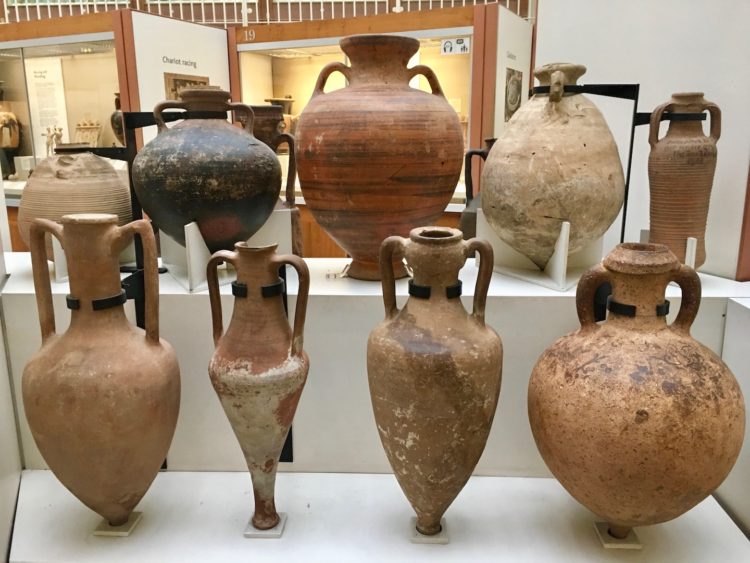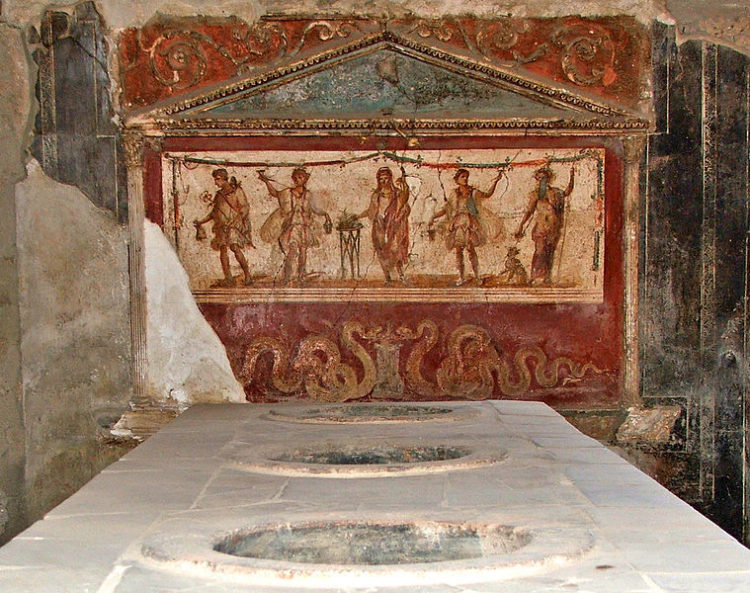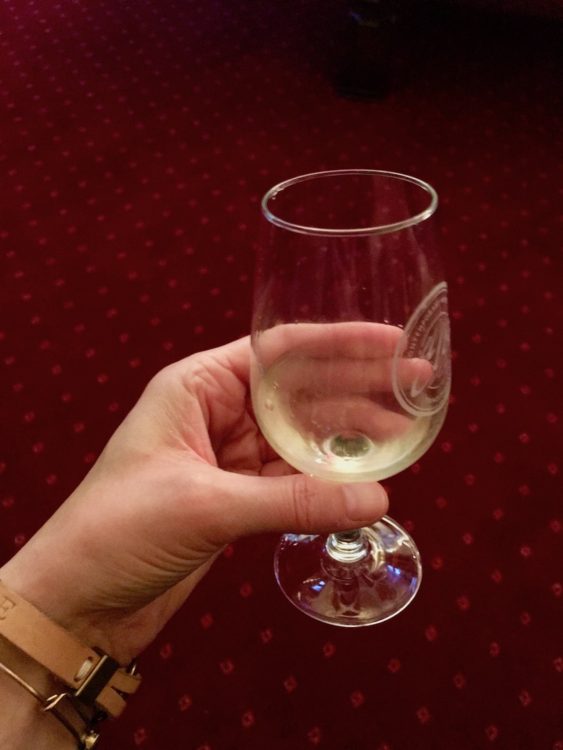A Brief History of Roman Wine

Roman and Greek Wine and Oil Amphoras, British Museum. (Photo by Sandra Alvarez).
In the autumn, I attended a Roman wine tasting event hosted by London’s Guildhall Library where we were not only able to enjoy an excellent variety of wines, but we were also given a glimpse into the history of Roman wine: flavours, social status, and production, by wine expert, Neil McKenzie of Ellis of Richmond.
Early Wines: Greek Dominance 800–300 BC
During this period, Greek wines were the ones to drink. They were prized, so this affected high prices because very few wines came from anywhere else. Rome was on the cusp of creating their own wines, but not a major player in wine production just yet. During this period, wines were sweetened with honey and herbs. This was because Greeks loved oxidized wines that tasted more like sherries. This made many wines either incredibly sweet, or very intense, so they had to be watered down to make them palatable. Nobody drank wine "neat".
Roman Wine Monopoly: 270–100 BC
The Romans quickly caught up in wine production, which they had learned from the Carthaginians. At this time, Rome had a monopoly on wine making, as production was banned in the outer provinces. This caused a wine shortage and prices to surge. The ban was not lifted for another hundred years. In Gaul, the wine prices reached astronomical proportions, they were so high that you could trade a slave for an amphora (40L) of wine!
Famous Falernian Wine
Jumping ahead to the first century AD, the Romans were now well into wine production. Near the city of Rome, the region became home to one of the most famous wines of this period: Falernian wine. This white wine was popular around the first century AD, then later disappeared. At the height of its popularity, it was the sweetest and most expensive wine you could have in the Roman Empire. Falernian wine was so popular that people in Pompeii scrawled writing on pub walls about it. In one Pompeii watering hole, a price list on the wall states: "For one ‘as’ you can drink wine, for two you can drink the best, for four you can drink Falernian." To give you an idea of how expensive it was, a soldier earned ten asses per day, so at four asses, Falernian wine would set a soldier back a good chunk of his daily earnings. In modern prices, a bottle of Falernian could cost approximately £1500 a bottle. For even bigger spenders, the top Farlernian wine, could cost you a year’s salary!

A fresco from the thermopolium of Lucius Vetutius Placidus in the city of Pompeii, depicting the spirit (genius) of the house central, flanked by Lares and Penates with Mercury on far left, Bacchus far right. Wiki Commons (Photo by Daniele Florio).
There were three main vineyards for Falernian wine. The wine was shipped from Pompeii all over the empire. Near Vesuvius, it took in volcanic nutrients, giving it a complex taste. Pliny the Elder (AD 23–79) said of Falernian, as it was his favourite, "It’s the strongest wine you can possibly have!". It was strong - at around 16%, it was at the highest percent a wine could reach at that time. Pliny wrote extensively about wine. He was a stickler for low production because he didn’t want inferior versions made, so he railed against the mass production of Falernian wine.
When Vesuvius erupted, it destroyed all the vineyards. As soon as the volcano cooled down, the Romans replanted more vineyards en masse. The emperor Domitian (AD 51–96) put out a decree that some vineyards had to be torn down, and over production stopped, because people were starving after the eruption, and land was being used for wine instead of food. This angered many senators, who owned the vineyards, but they were forced to comply. During this period, wine also became much drier, there was no need to sweeten it. Fortunately, vintners in this region have recently re-established these vineyards.

Roman wine tasting at the Guildhall Library in London. Whites were the wine of choice for the Roman upper classes. (Photo by Sandra Alvarez).
Wine as a Status Symbol: White vs. Red
Roman wine culture was extremely important, and differed between the sexes. Roman men drank as much as they wanted, however, it was frowned upon for Roman women to drink. Women could only drink sweeter wines, and getting drunk was a no-no.
Roman wine culture was also about what you could afford. The more money you spent on your wine, the more your status increased, so the wine you served in your household was very important, and was your gauge in Roman society.
Red wines started to become popular from the Rhône valley, but early Roman wines were white. Nobody of any import would be caught dead drinking a red wine. Red wine (which really was more of a rosé colour, not the deep reds we recognize today) was imbibed by soldiers and the poor. Coloured wine was considered inferior in 300 BC, and was considered acceptable only for the lower classes. Fast forward to the late Roman Empire, and red wines began to come into vogue. At this point, however, red wines had to be drunk rather young as they oxidized very quickly. In the later empire, oxidization was not popular anymore, as people wanted fresher tasting wines. Wines were not being aged long, and by the end of the fourth century AD, most wine was only a few months old when it was served.
Medicinal Uses: Wine for What Ails You
Lastly, wine was important to Roman culture because it was also used medicinally. It was recommended by the Romans for many ailments: depression, snake bites, tape worms, vertigo, constipation, and even halitosis. In fact, Cato the Elder (234–149 BC) had a great recipe to cure constipation which consisted of mixed manure and wine! The famous Greek physician, Galen (AD 129–216) used wine as an antiseptic. Wine was also apparently good for digestion because in the later Roman period, wines were becoming lighter in style, so they were considered easier on the stomach.
For more information about Guildhall events, please visit: Guildhall Library - City of London
Follow the Guildhall Library on Twitter: @GuildhallLib

